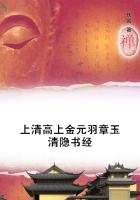Democritus said that monstrosities arose because two emissions of seminal fluid met together, the one succeeding the other at an interval of time; that the later entering into the uterus reinforced the earlier so that the parts of the embryo grow together and get confused with one another.But in birds, he says, since copulation takes place quickly, both the eggs and their colour always cross one another.But if it is the fact, as it manifestly is, that several young are produced from one emission of semen and a single act of intercourse, it is better not to desert the short road to go a long way about, for in such cases it is absolutely necessary that this should occur when the semen is not separated but all enters the female at once.
If, then, we must attribute the cause to the semen of the male, this will be the way we shall have to state it, but we must rather by all means suppose that the cause lies in the material contributed by the female and in the embryo as it is forming.Hence also such monstrosities appear very rarely in animals producing only one young one, more frequently in those producing many, most of all in birds and among birds in the common fowl.For this bird produces many young, not only because it lays often like the pigeon family, but also because it has many embryos at once and copulates all the year round.Therefore it produces many double eggs, for the embryos grow together because they are near one another, as often happens with many fruits.In such double eggs, when the yolks are separated by the membrane, two separate chickens are produced with nothing abnormal about them;when the yolks are continuous, with no division between them, the chickens produced are monstrous, having one body and head but four legs and four wings; this is because the upper parts are formed earlier from the white, their nourishment being drawn from the yolk, whereas the lower part comes into being later and its nourishment is one and indivisible.
A snake has also been observed with two heads for the same reason, this class also being oviparous and producing many young.
Monstrosities, however, are rarer among them owing to the shape of the uterus, for by reason of its length the numerous eggs are set in a line.
Nothing of the kind occurs with bees and wasps, because their brood is in separate cells.But in the fowl the opposite is the case, whereby it is plain that we must hold the cause of such phenomena to lie in the material.So, too, monstrosities are commoner in other animals if they produce many young.Hence they are less common in man, for he produces for the most part only one young one and that perfect; even in man monstrosities occur more often in regions where the women give birth to more than one at a time, as in Egypt.And they are commoner in sheep and goats, since they produce more young.Still more does this apply to the fissipeds, for such animals produce many young and imperfect, as the dog, the young of these creatures being generally blind.Why this happens and why they produce many young must be stated later, but in them Nature has made an advance towards the production of monstrosities in that what they generate, being imperfect, is so far unlike the parent; now monstrosities also belong to the class of things unlike the parent.
Therefore this accident also often invades animals of such a nature.
So, too, it is in these that the so-called 'metachoera' are most frequent, and the condition of these also is in a way monstrous, since both deficiency and excess are monstrous.For the monstrosity belongs to the class of things contrary to Nature, not any and every kind of Nature, but Nature in her usual operations; nothing can happen contrary to Nature considered as eternal and necessary, but we speak of things being contrary to her in those cases where things generally happen in a certain way but may also happen in another way.In fact, even in the case of monstrosities, whenever things occur contrary indeed to the established order but still always in a certain way and not at random, the result seems to be less of a monstrosity because even that which is contrary to Nature is in a certain sense according to Nature, whenever, that is, the formal nature has not mastered the material nature.Therefore they do not call such things monstrosities any more than in the other cases where a phenomenon occurs habitually, as in fruits; for instance, there is a vine which some call 'capneos'; if this bear black grapes they do not judge it a monstrosity because it is in the habit of doing this very often.The reason is that it is in its nature intermediate between white and black; thus the change is not a violent one nor, so to say, contrary to Nature; at least, is it not a change into another nature.But in animals producing many young not only do the same phenomena occur, but also the numerous embryos hinder one another from becoming perfect and interfere with the generative motions imparted by the semen.
A difficulty may be raised concerning (1) the production of many young and the multiplication of the parts in a single young one, and (2) the production of few young or only one and the deficiency of the parts.Sometimes animals are born with too many toes, sometimes with one alone, and so on with the other parts, for they may be multiplied or they may be absent.Again, they may have the generative parts doubled, the one being male, the other female; this is known in men and especially in goats.For what are called 'tragaenae' are such because they have both male and female generative parts; there is a case also of a goat being born with a horn upon its leg.Changes and deficiencies are found also in the internal parts, animals either not possessing some at all, or possessing them in a rudimentary condition, or too numerous or in the wrong place.















